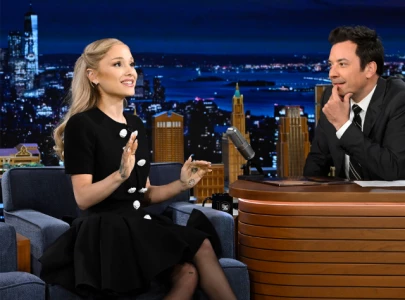1716210758-0/Screenshot-(1055)1716210758-0.png)
For 90s teens, Coke Studio Pakistan’s latest release, Chal Chaliye, packs a nostalgia-filled punch, courtesy of none other than Sajjad Ali. Featuring Farheen Raza Jaffry as the other half of the ballad, the track is every bit of Coke Studio's signature style of fusing traditional sounds with contemporary elements.
Opening with a generic mix of ambient noises, train whistles, chirping birds, crashing ocean waves - one is immediately transported to a soundscape both calming and anodyne. Then the synths kick in, accompanied by an immersive host of traditional instruments. However, the heart of the song is unmistakably Sajjad’s vocal performance.
Sajjad has been a regular fixture at the music franchise, delivering memorable performances with songs like Tum Naraz Ho and Ronay Na Diya. For those familiar, his delivery harkens back to his golden era of the 90s enveloping the listener in a warm, hopeful, and nostalgic embrace that’s rare in today’s pop music. His voice carries a certain timeless quality that is both comforting and evocative, making an energetic comeback to Coke Studio after six years.
The song’s chorus marks a shift, infusing modern elements into the track with its indie pop-inspired synths, kicks, and claps. This juxtaposition of Sajjad’s emotive vibrato against the backdrop of long, drawn-out synth notes and an almost ethereal flute creates a compelling contrast. His voice dances around the instrumentation, adding dynamic texture and depth to the melody
Farheen’s contribution, although brief, is noteworthy. She appears sparingly, first interjecting with two lines before Sajjad returns and then joins in the final chorus. While her performance is commendable, she doesn’t get the opportunity to fully showcase her talent. There is no denying that Chal Chaliye is decidedly Sajjad Ali-centric and while Farheen’s presence adds a beautiful layer, it feels underutilised.
The song’s outro falls into a familiar pattern often seen in Coke Studio’s arrangements. Both artists harmonise over a busy instrumental backdrop, with vocal ad-libs sprinkled throughout, leading to a fade-out. This ending, while consistent with the show’s formula, feels somewhat predictable and safe, not quite matching the innovative spirit of the rest of the track.
Have something to add to the story? Share it in the comments below.

1731637727-0/Bear--(1)1731637727-0-165x106.webp)

1731619853-0/ice-cream-(1)1731619853-0-165x106.webp)

1719921789-0/dua-lipa-(1)1719921789-0-270x192.webp)











COMMENTS
Comments are moderated and generally will be posted if they are on-topic and not abusive.
For more information, please see our Comments FAQ